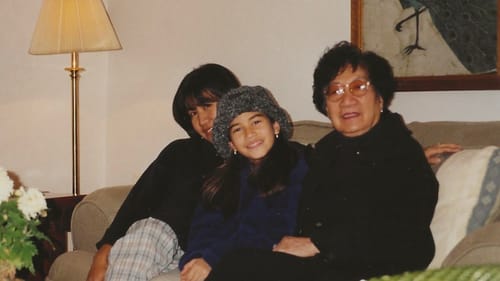Stay in the Loop
BSR publishes on a weekly schedule, with an email newsletter every Wednesday and Thursday morning. There’s no paywall, and subscribing is always free.
Resistance through poetry
During Filipino American History Month and beyond, poetry offers a rare non-colonial lens

“Know history, know self; no history, no self,” is the exceptionally heavy tagline for Kirby Araullo’s peppy Filipino history YouTube videos. These words have been resonating with me lately, and especially now, during Filipino American History Month.
Like many, when the pandemic whipped our daily routine out from under our feet, I craved comfort and stability more than ever. Growing up, my mom’s stories, meals, and cultural idiosyncrasies helped connect me to my Filipino heritage, a part of my identity that often feels equivocal. Since I have not lived close to my parents for more than a decade now, I can no longer rely on those lifelines, so I decided to educate myself on the history and culture of the Philippines. Quickly disheartened by the predominantly American or Spanish perspective that coats most available resources, I discovered Filipino poetry, which has helped me access the history and complexities of the Filipino experience through a rare non-colonial lens.
As explained by writer and editor Nick Carbó in Returning a Borrowed Tongue, an anthology of Filipino and Filipino American poetry, Americans imposed English on the native population in efforts to “civilize and subjugate” the “little brown brothers.” However, since many writers were already skilled in Spanish and native languages, they were able to adopt the English language and use it to reflect the native experience and indigenous imagination. This act of resistance has created an evolution of Filipino poetry in English, cultivating Filipino and Filipino American poets across the globe who explore themes of history, identity, nostalgia, alienation, and the diaspora that connects us all.
The balance of identity
The poetry in Returning a Borrowed Tongue investigates the ways Filipinos can feel existentially misplaced in a world that fails to properly acknowledge or represent them. In “Landscape with Figures,” Carlos Bulosan writes, “Home is a foreign address, every step toward it is a step toward three hundred years of exile from the truth…”
These struggles of alienation and assimilation are ingrained in us as children, as explored by Eugene Gloria in her “Assimilation.”
"Ashamed to be more different ... the rice, I hid from my schoolmates," she writes. "Next morning, my mother grasped the appropriate combination: fruit, sandwich cut in two triangles, handful of chips, my best broken English. And weeks passed while the scattered rice—beneath the length of that red-painted bench—blackened with the schoolyard’s dirt."
Growing up in military environments where diversity was the norm, I did not think about my identity. However, as I got older, I started to feel the insidious repercussions of this balancing act, haunting me with the question of what aspects of my culture I may have forgotten or left behind.
We are the history
My friend Gideon, fellow Fil Am artist, writer, and history enthusiast, describes the late great Filipino poet Al Robles as “a Bay Area Bard, his voice magical, grounded, and of the street.” In his book of poetry, rappin’ with ten thousand carabaos in the dark, Robles encapsulates the sensibilities of the early Filipino immigrants who settled on the West Coast and in the Pacific Northwest. In “A Thousand Pilipino Songs: Ako Ay Pilipino,” he writes, "i am the slated pink salmon from alaska barreled in thick seasoned wood...slashing across like a bolo—drifting down to the bay of san francisco—wading thru the thick soggy fog & down the seaweed rocky shores." Robles writes about Filipinos as if they embody history itself.
Being a military brat, and Asian American, I spend a lot of time explaining to people where I am from, and “what I am;” the labor of being a person of color or ethnically ambiguous. Robles reminds me that the diaspora runs in our veins, something that does not require an explanation for those who do not, or refuse to, understand. In the same poem quoted above, Robles writes "i am the blood-earth patis flowing thru the mountain soil-veins of my people—the slated dung tongues of winter rain mud-carabao—ako ay pilipino—i am pilipino—the thousand-year-old savage-green moss-forest ifuago bagoong."

We own ourselves
Marianne Chan is a poet and academic who, like me, spent part of her childhood in Germany. Her collection of poems, All Heathens, explores colonialism, her anecdotes painted with heart and humor. Chan articulates complex concepts in a frank and profound way, notably in “When the Man at the Party Said he Wanted to Own a Filipino,” when she examines the potentially positive or detrimental traits that we inherit: "I wanted to be liked, which is my tragic flaw. I always find myself on the street smiling at people who look to be neo-Nazis ... I used to wonder if this amenability was inherited. Raja Humabon, a Filipino king in the 1500s, did not resist Magellan’s missionary agenda."
This notion of “friendliness and pleasantness above all” feels ingrained in me—traits that perpetuate a societal norm that Asian women in particular are expected to adhere to; be polite, submissive, and easy-going. However, Chan’s tone is unwavering, reminding me of the power that we hold: "This story is about the way the world believes that it owns us, holding its album of pictures in its wishful hands … We are the cornioles, who, after being eaten alive by a whale, enter the whale’s body and take small, tender bites of the whale’s enormous heart."
Navigating toward truth
In this poetry I found an education, comfort, and truth, something that is tragically hard to access. Filipino American History Month commemorates the moment when the first Filipinos, or “Luzon Indios,” landed on what is now Morro Bay, California, on October 18, 1587. Their names were not recorded by the Spaniards, and there is uncertainty about who exactly they were. It is common to think they were enslaved people trying to escape the Spanish, or skilled navigators who built and sailed the Manila galleons. This history seems to be omitted from our American history books entirely, prompting Chan to ask, “If a tree falls in the forest with no European to hear it, did it really exist before the 1500s?” I am indebted to those who used English as a vehicle of defiance, providing necessary context that is missing from our history.
Image description: Kelly Conrad, a young Filipino American woman, sits smiling in front of a shelf with books, vases, and plants behind her.
Image description: A photo of three people sitting cozily squished together on a green couch, all of Filipino heritage: a young woman, a girl in the middle, and an older woman.
What, When, Where
Returning a Borrowed Tongue: An Anthology of Filipino and Filipino American Poetry. Minneapolis: Coffee House Press, 1995. 239 pages, paperback: $14.95. Purchase here.
All Heathens. Louisville, KY: Sarabande Books, 2020. 74 pages, paperback: $14.95. Purchase here.
Rappin’ with Ten Thousand Carabaos in the Dark. Los Angeles: UCLA Asian American Studies Center, 1996. 123 pages, paperback: $13.00. For the quickest option, order here, or support local and pre-order here.
Sign up for our newsletter
All of the week's new articles, all in one place. Sign up for the free weekly BSR newsletters, and don't miss a conversation.

 Kelly Conrad
Kelly Conrad